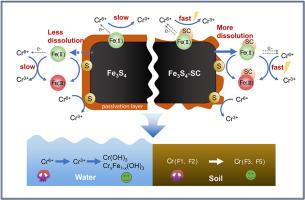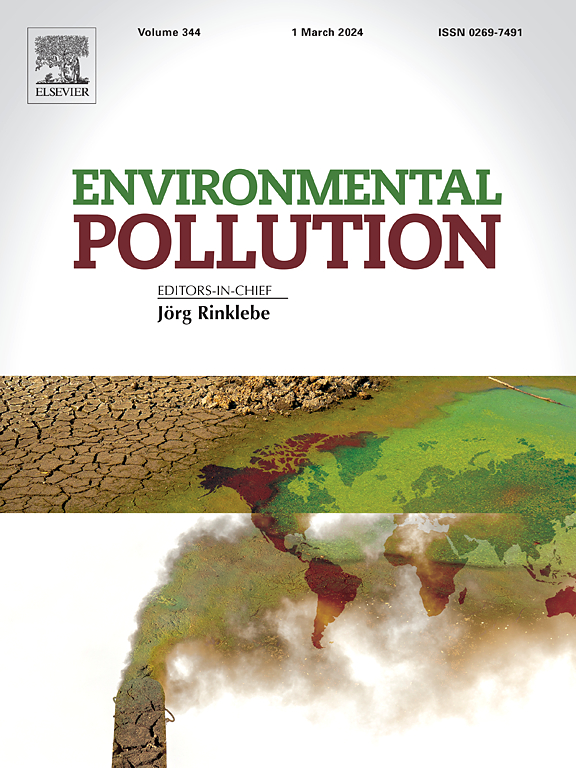Sodium citrate-modification enhanced Fe3S4 for Cr(Ⅵ) removal from aqueous solution and soil
IF 7.6
2区 环境科学与生态学
Q1 ENVIRONMENTAL SCIENCES
引用次数: 0
Abstract
Fe3S4 has been widely employed to remove Cr(Ⅵ) from wastewater, however, its practical effectiveness is often limited by agglomeration and passivation. This study introduces sodium citrate (SC) as a ligand to synthesize an Fe3S4-SC magnetic micro-crystal for Cr(Ⅵ) removal from aqueous solutions and contaminated soils. Experimental results show that Fe3S4-SC exhibits superior Cr(Ⅵ) removal efficiency, especially in acidic environments, with a maximum adsorption capacity of 449.12 mg/g. When Fe3S4-SC was used to remediate Cr(Ⅵ)-contaminated soil with a Cr(Ⅵ) content of 664.98 mg/kg and a TCLP-Cr(Ⅵ) concentration of 26.57 mg/L, the removal efficiencies of Cr(Ⅵ) and TCLP-Cr(Ⅵ) were 99.29% and 98.52% after 60 days. Cr speciation shifted from exchangeable fraction and weak acid-soluble fraction to more stable species bound to Fe-Mn oxides and residual fraction. Cr(Ⅵ) removal was primarily facilitated by surface Fe(Ⅱ), dissolved Fe(Ⅱ), and surface S(-Ⅱ). Surface S(-Ⅱ) provided electrons to Fe(Ⅲ), facilitating Fe(Ⅱ) regeneration for the continuous reduction of Cr(Ⅵ). The SC ligand enhanced material dispersion and stability, promoted Fe(Ⅱ) dissolution, reduced passivation layer formation, and improved electron transfer efficiency, thus increasing the efficacy of Fe3S4-SC in Cr(Ⅵ) removal. These findings provide a valuable reference for effectively remediating Cr(Ⅵ) contamination in wastewater and soil.

求助全文
约1分钟内获得全文
求助全文
来源期刊

Environmental Pollution
环境科学-环境科学
CiteScore
16.00
自引率
6.70%
发文量
2082
审稿时长
2.9 months
期刊介绍:
Environmental Pollution is an international peer-reviewed journal that publishes high-quality research papers and review articles covering all aspects of environmental pollution and its impacts on ecosystems and human health.
Subject areas include, but are not limited to:
• Sources and occurrences of pollutants that are clearly defined and measured in environmental compartments, food and food-related items, and human bodies;
• Interlinks between contaminant exposure and biological, ecological, and human health effects, including those of climate change;
• Contaminants of emerging concerns (including but not limited to antibiotic resistant microorganisms or genes, microplastics/nanoplastics, electronic wastes, light, and noise) and/or their biological, ecological, or human health effects;
• Laboratory and field studies on the remediation/mitigation of environmental pollution via new techniques and with clear links to biological, ecological, or human health effects;
• Modeling of pollution processes, patterns, or trends that is of clear environmental and/or human health interest;
• New techniques that measure and examine environmental occurrences, transport, behavior, and effects of pollutants within the environment or the laboratory, provided that they can be clearly used to address problems within regional or global environmental compartments.
 求助内容:
求助内容: 应助结果提醒方式:
应助结果提醒方式:


